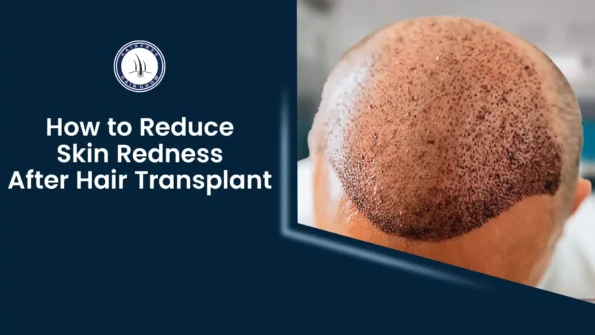Undergoing a hair transplant can be a life-changing decision, but many patients have concerns about the appearance of their skin post-procedure, particularly with issues like redness. This is a common side effect that can cause worry, as the visibility of redness might detract from the newly implanted hairs overall aesthetic. Understanding the causes of skin redness is crucial for managing it effectively. Redness after a hair transplant is a normal part of the healing process and typically subsides within a few days to weeks.
Factors such as the surgical technique used, individual skin sensitivity, and the bodys healing response all play significant roles in how the skin reacts after a hair transplant. Thankfully, several strategies can help minimize these effects and promote a smoother recovery. In this blog, we’ll explore why this redness happens, how long it lasts, and what you can do to manage it.
Is Redness After a Hair Transplant Normal?
Yes, having a red scalp after a hair transplant is completely normal. During the surgery, thousands of tiny cuts or incisions are made on the scalp to transplant hair follicles. This process naturally causes irritation and triggers your body’s healing response.
Think of it like a small paper cut. The skin becomes red and slightly swollen because of the increased blood flow and extracellular fluid that rush to the area. This is part of the body’s natural inflammatory process, and it’s expected. The redness is a sign that your scalp is healing.
How Long Will the Redness Last?
The redness on your scalp can last for about 2 to 4 months after the surgery, though this can vary depending on your skin type. People with fair skin may experience redness for a little longer than those with darker skin because of the contrast between the hair and skin.
In the first week after surgery, you may also notice swelling and bruising around your forehead and eyes. This swelling typically moves down your face over the following days and goes away within 5 to 8 days.
Some people in public professions like models or TV presenters may need to reduce the redness for special events. In such cases, doctors might prescribe a low-dose steroid cream that can help reduce the redness temporarily.
Aftercare for Reducing Redness and Swelling
Proper aftercare is key to managing redness and swelling after your hair transplant. Here are some essential tips to follow:
- Avoid Strenuous Activities: For the first 7 days after surgery, avoid exercise, cardio, or bending your head down. These activities can increase pressure on your scalp, which may cause the grafts to dislodge.
- Keep Your Scalp Clean: Follow the recommended aftercare routine, which usually includes spraying your scalp with hypothermal and saline solutions. This helps prevent infection and promotes healing. It’s a strict protocol, but it’s crucial for good results.
- Avoid Touching Your Scalp: Do not wear hats or allow anything to touch your scalp for the first 5 days. This includes pets or any contact with surfaces like pillows or bed sheets. Always use clean sheets and avoid putting pressure on your scalp.
- Finish Your Antibiotics: It’s important to complete any medications, especially antibiotics, prescribed by your doctor to avoid infections.
- Stop Smoking or Vaping: Smoking and vaping can slow down the healing process and affect hair growth. Try to avoid them for at least a few weeks before and after your surgery.
When Can You Wear a Hat?
You can start wearing a hat or head covering after 7 days. Wearing a hat too early could damage the grafts if they catch on the fabric. By day 8, it should be safe to wear a hat, which can help hide any remaining redness or uneven hair growth during the early healing phase.
How to Reduce Redness Faster
If you need to reduce redness quickly, your doctor may prescribe a low-dose steroid cream. This can help bring the redness down for 1-2 weeks. However, keep in mind that redness is part of the natural healing process, and your body will take its time to recover fully.
Conclusion
Redness after a hair transplant is a completely normal part of the healing process. It may last anywhere from a few weeks to a few months, depending on your skin type and how well you care for your scalp. By following the aftercare instructions from your doctor, you can reduce the redness, avoid complications, and ensure a successful hair restoration outcome.
For more tips or questions about hair transplant aftercare, feel free to contact HairFree HairGrow Clinic for personalized advice.
Written By
MBBS, DDV
Dr. Nipun Kesarkar is a distinguished dermatologist and hair transplant surgeon with over seven years of experience. Practicing at Urban Skin and Hair Clinic in Mumbai, he specializes in addressing redness after hair transplant procedures, ensuring optimal patient outcomes.
Disclaimer
We’ve made all possible efforts to ensure that the information provided here is accurate, up-to-date and complete, however, it should not be treated as a substitute for professional medical advice, diagnosis or treatment. See Detailed Disclaimers Here.


